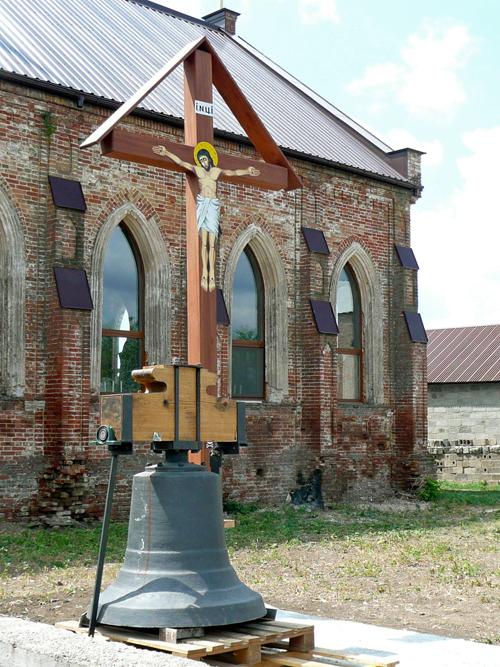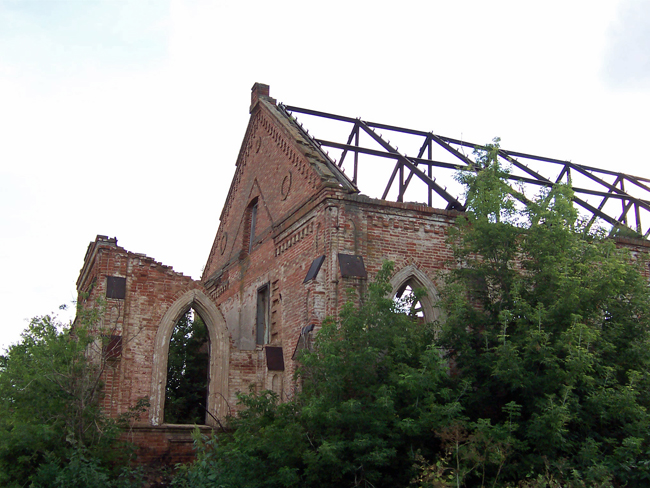Posted: November 26, 2014
Kitchener, Ontario, Canada – In Ukraine a former Mennonite church building is being restored and transformed – with the help of Canadian Mennonites – into a Greek Catholic church.
This development, according to observers, is an example of Mennonite-Catholic collaboration in the spirit of other exchanges over the past decade or so.
The Mennonite church in the former village of Schoensee (now Snegurovka) was originally built in 1909. During the post-October 1917 revolution Soviet era, when Mennonites were forced to leave, the church building was used for storage and then fell into disrepair.
Recently the Greek Catholic Church in Ukraine secured ownership of the building and a retired Catholic priest from the Czech Republic, Father Peter Trenzky, is giving leadership to the restoration as well as to the congregation, which has started to worship in the building.
In learning about the restoration project, individuals associated with the Mennonite Centre in nearby Molochansk (formerly Halbstad) offered to help. The Centre was established in 2001 in the former Mennonite Girls’ School (Maedchenschule) to provide a range of community services.
“Initially Father Peter was afraid that Mennonites wanted to take back the church,” said George Dyck, treasurer of "Friends of the Mennonite Centre in Ukraine" (FOMCU), the Canadian-based charity providing partial funding to the project over the past year. (See www.mennonitecentre.ca or the Facebook page “Mennonite Centre Ukraine” for more information on FOMCU.)
Dyck describes the involvement as a “mutual embrace of returning Mennonites with their former fellow villagers.” According to Dyck, the official opening of the restored church will be held in July or August of this year.
According to Darrin Snyder Belousek, the renovation of the former Schoensee church “is the fruit of the renewal of the Catholic Church in Ukraine.” Snyder Belousek is executive director of Bridgefolk, a North American-based movement of Mennonites and Catholics with an annual gathering to learn from each other’s traditions.
He further pointed out “a parallel of sorts” between the experience of Ukrainian Catholics and that of Russian Mennonites. The former lost their churches, had no legal protection and survived as an underground church during the Soviet era. Russian Mennonites also were not officially recognized by the Soviets and assimilated with the Baptists.
“Both churches faced repression under similar circumstances from the same oppressor,” commented Snyder Belousek, “and had to make costly choices to keep faithful.”
Bridgefolk was formed shortly after the start of the 1998-2003 International Mennonite Catholic Ecumenical Dialogue organized by Mennonite World Conference and the Vatican’s Pontifical Council for Promoting Christian Unity. (See www.bridgefolk.net)
In 2007 Bridgefolk held a conference to reflect on “Called Together to Be Peacemakers,” the final report of the Mennonite-Catholic dialogue. (See www.mwc-cmm.org for a copy of the report.)
MWC release by Ron Rempel





Join the Conversation on Social Media
FacebookTwitterInstagramFlickrYouTube